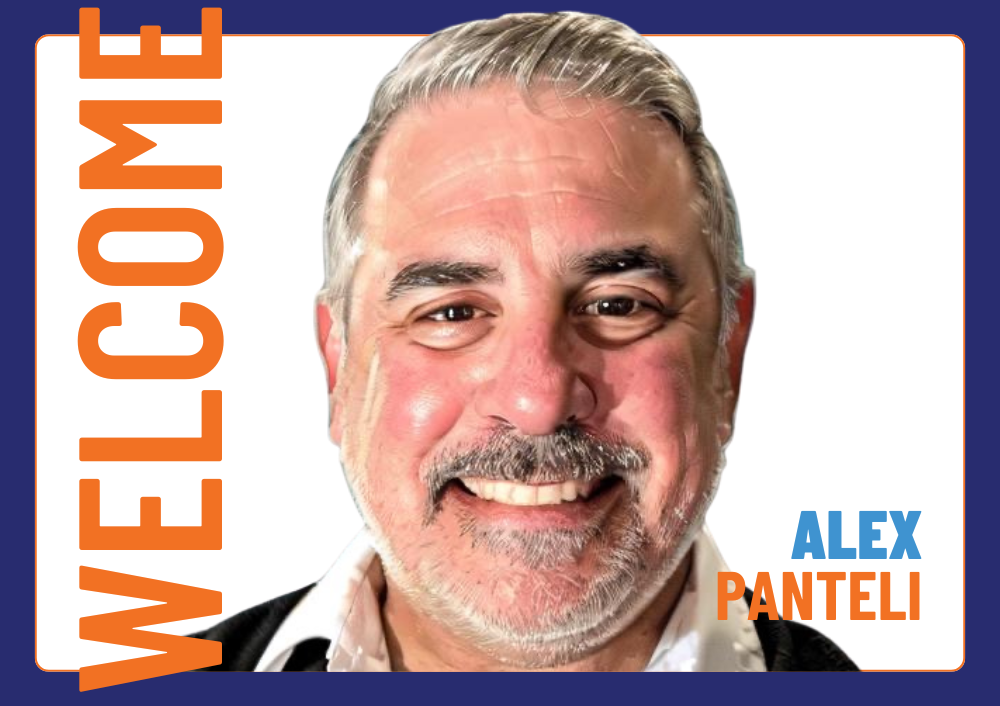
Digital Transformation in Healthcare - Interview with Jeff Scott
This article first appeared in Authority Magazine - full link here
DIGITAL TRANSFORMATION IN HEALTHCARE: JEFF SCOTT OF FUSION92 ON HOW MEDICAL PRACTICES CAN USE DIGITAL TRANSFORMATION TO PROVIDE BETTER CARE
An Interview With Jake Frankel
By Authority Magazine Editorial Staff
August 18, 2023
Compassion. Nothing will ever replace the unique role of a physician in the lives of their patients. The ability to truly see each patient as an individual and to interact with and treat them accordingly will always be the most effective tool of all.
As a part of our series about “Medical Practices Can Use Digital Transformation To Provide Better Care,” I had the pleasure of interviewing Jeff Scott, President, Health, Fusion92.
Jeff leads the growth and success of the firm’s health industry brands. He has worked with some of the nation’s top healthcare organizations, including Blue Cross Blue Shield of Michigan, University of Michigan Health System, the American Heart Association and more. Jeff has held leading roles for several top agencies, overseeing a broad portfolio of accounts.
Thank you so much for your time! I know that you are a very busy person. Before we dive in, our readers would love to “get to know you” a bit better. Can you tell us a story about what brought you to this specific career path?
I was a creative person at a very early age — I experimented with writing, music, art and photography before eventually studying creative writing at the University of Michigan. Upon graduation, I became a trainee at a Detroit advertising and marketing firm. Copywriting led to creative supervision, which led to strategy, then account and business leadership and consulting with clients at an executive level. As my skills grew, I took responsibility for multiple client relationships. As it happened, many of the accounts were health related, from health systems to payers to health organizations. The result has been a holistic understanding of the objectives of those entities combined with ongoing learning about what people are looking for in their interactions throughout the entire health care process.
Can you share the most interesting or most exciting story that has happened to you since you began at your company?
The most exciting story, for me, is the success of our business itself. It’s taken time, patience, the creation and collaboration of the total team — which has significantly expanded over time — and an unwavering objective of a culture of excellence. Fusion92 was not an overnight success, but it’s more fulfilling for having been achieved over time.
It has been said that our mistakes can be our greatest teachers. Can you share a story about the funniest mistake you made when you were first starting? Then, can you tell us what lesson you learned from that?
Early in my career, a client contacted me about a communication he wanted for a new, engineering-based product. He briefed me on the features and benefits and provided technical specifications. As we neared completion, our legal counsel wanted verification of those specifications. I called the client repeatedly with no response. Finally, he returned the call. “I can’t provide the specifications,” he told me. “I made them up.” It was such an unexpected answer that I did actually start laughing. Extraordinary. ”I made them up.” Lesson learned: trust, but verify.
You are a successful leader. Which three character traits do you think were most instrumental to your success? Can you please share a story or example for each?
1. Honesty. In all interactions with clients, colleagues, staff and everyone you come in contact with. Honesty establishes trust and respect, and just as importantly, it creates objectivity around expectations. For example, when you’re stewarding clients’ budgets and business objectives, promising unachievable results simply leads to failure for everyone. So, keep it real.
2. Persistence. The success of his presidency may be questioned, but Calvin Coolidge was correct when he wrote, “Persistence and determination alone are omnipotent.” When it’s outwardly generated by a leader, persistence takes the form of motivation — to keep going, to weather setbacks and to achieve the goal. I’ve told people frequently that I “play the long game.” That’s persistence.
3. Creativity and Communication. A two-for-one. Seeing what isn’t there, triangulating information to ideate new solutions and then successfully communicating that vision (both in writing and verbally) to establish goals and orchestrate teams have been central to my success. Creative skills are inherent to who I am, but learning to adapt them for business took time and patience.
What are some of the most interesting or exciting projects you are working on now? How do you think that might help people?
Some current, important work is focused on younger populations who typically have a lower awareness or interest in health care and, despite their lack of experience, they also believe the entire system is complicated and out of touch.
Via the media platforms they use most (primarily social), we’re starting a conversation with these young people to demonstrate how health care has evolved to embrace the things they care about most, such as behavioral health and mind/body balance, and that digital technology is in place to allow them easy access to the process, using the tools they’ve grown up using. It’s truly foundational work, and I’m excited to watch the results over time for the businesses and for those young people as they benefit from the relationships.
Thank you for all that. Let’s now shift to the main focus of our interview about Digital Transformation in Health Care. I am particularly passionate about this topic because my work focuses on how practices can streamline processes to better serve their patients. For the benefit of our readers, can you help explain what exactly Digital Transformation means? On a practical level, what does it look like for a medical practice to engage in a digital transformation?
From the most basic level, it’s the digitization and integration of systems and processes that normally were accomplished face-to-face and/or by hand or by “analog” tools such as phone landlines and fax machines. Some of this was accelerated by the Electronic Medical Records Mandate in 2009, and, just prior to that, the adoption of the Patient-Centered Medical Home (PCMH), which sought to provide an integrated view for an individual and their primary care provider (PCP). Clearly, technology was going to be central to making the PCMH a valuable reality, but digital technology and smartphones in particular have exponentially evolved over the past 13 years, so “digital transformation” is much more comprehensive and fluid and ongoing.
Today it means everything from physician medical portal apps, to online scheduling with doctors’ offices, to real-time access to test results through affiliated providers, all through one’s phone or web browser. This transformation received a jump-start during the COVID-19 pandemic as telemedicine and 24-hour nurse lines became vital conduits to care in social distancing or quarantine.
What are the specific pain points that digital transformation can help address in a medical practice?
There are many. First is that it’s very clear patients no longer want to be just recipients of health care. They want to be — and now expect to be — participants in their own health care journeys and contributors to their own well-being. To that end, giving patients as much access as possible to the data, information and communications that empower them to “be” that participant, matched with expert medical care, is critical and vital. The digital transformation inside a medical practice, via the many available tools and platforms, can make that happen. And it can only generate greater satisfaction and more positive outcomes for all involved now.
What are the obstacles that prevent a medical practice from engaging in a digital transformation?
Lack of expertise, cost and time. First, health care professionals aren’t digital/IT experts, and they shouldn’t be. So it’s most often necessary to engage a consultant to help define and oversee or implement the vision. Second, digital transformation can be a burdensome, new, overhead line item for any practice. New technology, new licenses, databases … the list of needs is long. Lastly, there is the time associated with its implementation and often frustrating bumps in the road along the way, including potential interruptions to the efficient running of the practice.
But here’s the rub: Digital transformation isn’t a one-time-only investment. Because technology always has and always will evolve, once implemented, the transformation and some portion of the costs and time associated with it will continue.
Managing a health care facility is more challenging than it has ever been. Based on your experience or research, can you please share with our readers a few examples of how digital transformation can help a medical practice to provide better care? If you can, please share a story or example for each.
A primary component of digital transformation, as we discussed above, is the integration of data across providers, all in service to the patient from primary care physicians to health systems to clinical services to pharmacies and more. The benefit is centralized and mostly real-time information available to the patient via any number of online portals. This speeds up communication with the patient and fosters more immediate co-management of the health situation by the patient and their PCP.
Health wearables are now also a significant component of digital transformation. One of the most common — a heart monitor — gives physicians real-time information on their patient’s condition, allowing for a more complete diagnosis and treatment plan or much faster emergency care, if needed. And all of this is done while the patient goes about their daily life and the physician continues seeing other patients.
From a broader perspective, there is a really stunning example of better care through digital transformation. It revolves around the emergence of patient participation and empowerment I described, and it involves one of the most complex and common health problems: diabetes. In 2013, the hashtag #WeAreNotWaiting was created by a consortium of concerned data professionals at a conference at Stanford University. Their focus was the lack of operability in the diabetes data platforms and the need for digital innovations that would help solve the problems and create better care and outcomes for all people with diabetes. Their work continues, but the effort was adopted by patients themselves to urge faster innovation not only in data systems but also in monitoring/measuring wearables and more.
Can you share a few examples of how digital interactions or digital intake processes can help create a frictionless patient experience and increase access for patients?
● Telehealth (virtual office visits) grew by an extraordinary 154% in 2020 due to the pandemic, according to the CDC. And it continues as a primary option, allowing patients to interact “face-to-face” with their doctors without ever leaving home, creating extraordinary time savings and greater safety for both.
● Online form processing allows patients to complete and upload necessary paperwork and information in a fast, efficient and completely secure manner in advance of their appointments, streamlining appointments and accompanying wait times.
● The days of reading your health insurance subscriber number over the phone for health insurance are quickly dwindling. Insurance digital identification cards can be sent via text or email to health providers in seconds.
Based on your opinion and experience, what are your “5 Things You Need to Create a Highly Effective Medical Practice” and why?
Based on our experience with health vertical clients and our ongoing research in the space, effective medical practices are defined by much of what we’ve discussed and illustrated today:
1. Empowering patients to be participants in their health care through digital technology and tools such as health care portals.
2. Creating simplicity for the patient through digital platforms for appointments, information intake and more.
3. Access to and use of clinical data to make more informed diagnoses and treatment decisions.
4. Commitment to evolving with the times. As technology and patient expectations change, so should the practice.
5. Compassion. Nothing will ever replace the unique role of a physician in the lives of their patients. The ability to truly see each patient as an individual and to interact with and treat them accordingly will always be the most effective tool of all.
Because of your role, you are a person of significant influence. If you could inspire a movement that would bring the most amount of good to the most people, what would that be? You never know what your ideas can trigger.
Rice is the most important crop in the world. About 4 billion people — more than half the world’s population — depend on rice as a core component of their daily nutrition. Unfortunately, climate change is severely impacting its growth and harvest. Too much heat, too much or too little rain, salt from rising and encroaching seawater … all these impact the ability to grow rice successfully. Given this new reality, a movement to find or contribute to innovative ways of growing and harvesting rice at the volumes the world requires, within the parameters of our new climate reality, seems incredibly important to me and something all people should support. There are many individual and collaborative efforts across many different sectors happening right now. I don’t know how anything right now could be more important to more people, 4 billion and counting. So, “Save Rice!”
How can our readers further follow your work online?
https://www.linkedin.com/company/fusion92/
https://www.instagram.com/fusion_92/
This was truly meaningful! Thank you so much for your time and for sharing your expertise!





